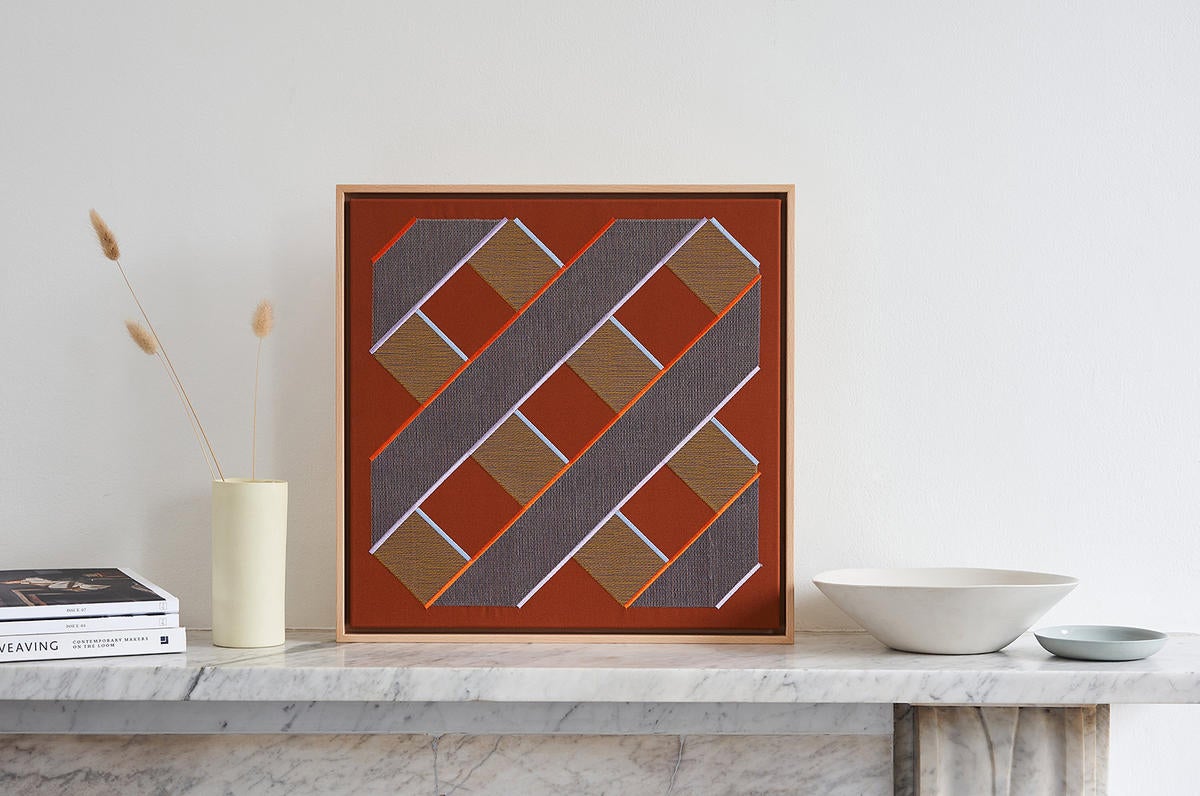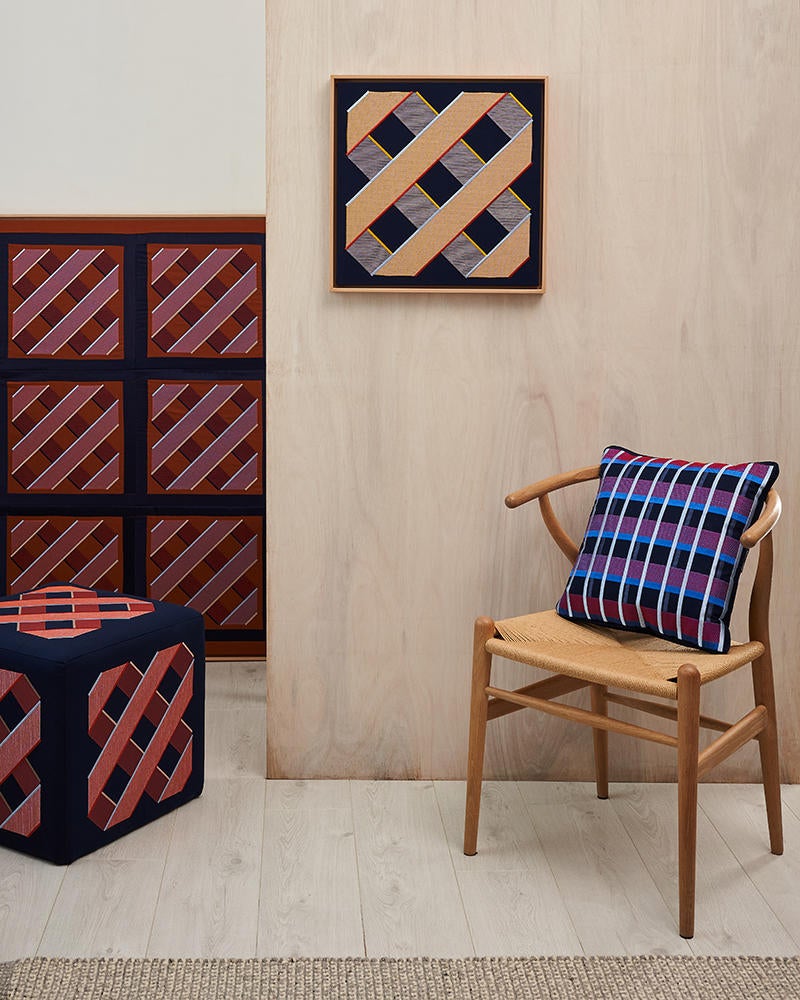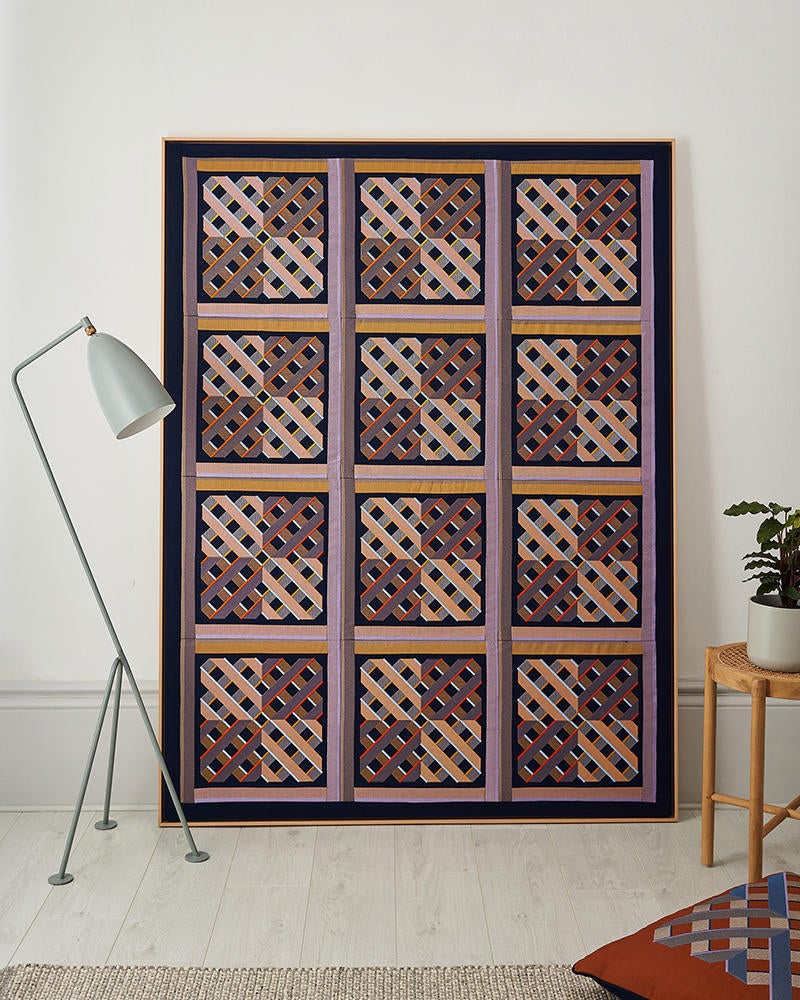From a young age, Amelia Ayerst was fascinated by color. She recalls snapping photographs of hues and shades that caught her eye throughout her childhood before eventually landing in the fashion industry in New York and London. Later, she headed to graduate school, where she happened upon the ideal medium to explore her interest in color. Here, Ayerst discovered the digital embroidery machine that changed the trajectory of her creative career, causing her to throw herself into mixed media and textiles with a focus on how color influences engagement with a given material. It’s a theme that has become intrinsic to her work, culminating in her recently launched collection of kaleidoscopic embroidery.

Upon finishing her degree at the Royal College of Art in London in 2017, the designer was approached by British technology brand Dyson to work on the CMF (colors, material and finishes) team for its automobile division. After spending three years researching and developing materials for the company’s electric car prototype, Ayerst, who had always dreamed of launching her own firm, took the plunge. In December 2019, she began developing her brand, Duo-Hue, and when pandemic lockdowns hit a few months later, she welcomed the refreshing new pace of her day-to-day. “COVID gave me time to slow down and really work into the colors and patterns [to] create something that I’m much prouder of,” says Ayerst, who immersed herself in a sea of color, developing digital embroidery designs that transform as they move.
In February 2020, she launched Duo-Hue’s debut collection, which features three main geometric patterns, each a visual and textural exploration of layers of color and stitch density. The result has a mesmerizing effect: “The colors and patterns interact with people—as you move the textiles, the colors change, [giving] an illusion within the pattern,” she says. The shape-shifting, 3D quality of the embroidery translates particularly well to pillows and framed textiles, two products that she chose to launch with. (Ayerst also released a collaborative capsule collection of one-of-a-kind rucksacks with British designer Francli Craftwear, incorporating her embroidery into upcycled cotton backpacks.)


Ayerst designs all of her patterns digitally before programming her embroidery machine to execute the design using fine thread on cotton canvas—but don’t be fooled by the digital aspect of her craft. Her process is a fairly time-intensive one. Each made-to-order piece takes hours on the embroidery machine before she finishes the stitching by hand, eventually sending them to a local Bristol workroom. “I’ve always appreciated design that has been slowed down,” the designer says. “Even though I am going down a digital route of designing and drawing, this embroidery still [involves] much more of a personal touch—I’m there creating the colors, the layers and the different densities of stitch. That is really important in my work.”
As Ayerst looks to the future, she anticipates working on more bespoke orders from interior designers, a collaboration with British furniture designer Tom Collison, and expanding her product line with textiles that are always more than what meets the eye. “A lot of people see digital embroidery as a traditional sort of thing, [like] motifs on clothes,” she says. “Whereas [what I’m doing] is using an innovative stitch that I created and turning it into a modern craft rather than a mass-produced thing.”
To learn more about Amelia Ayerst, visit her website or find her on Instagram.
Homepage image: Amelia Ayerst | Nic Kane





























